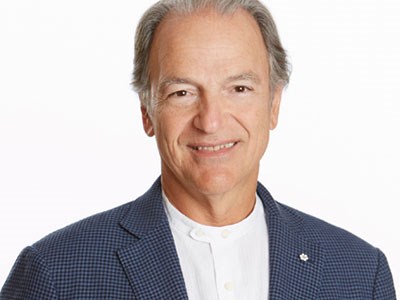The mining industry lacks the government support needed to innovate, said Pierre Lassonde, chairman of Franco-Nevada Corporation.
Lassonde is scheduled to speak at Laurentian University's Fraser Auditorium, Nov. 6, where he plans to address many of the issues Canada's mining sector faces.
“The Ontario government blew $300 million on MaRS (Innovation) here in Toronto for high technology that has gone nowhere, producing nothing,” Lassonde said in a phone interview with Northern Ontario Business.
“Why don't you invest that money in exploration and find billion-dollar ore bodies that are going to produce a billion dollars’ worth of taxes?”
Lassonde said there have not been any major technological breakthroughs in the mining sector since the 1980s.
While machinery has gotten bigger and more efficient, and exploration techniques have gotten more refined, nothing has changed dramatically, he said.
“We're reaching the limit of many of the technologies we've been using for the past 50 years,” Lassonde said.
The advent of reflection seismology in oil exploration increased the rate of new discoveries from one for every 10 drill holes, to seven for every 10 drill holes, added Lassonde, but there has been no such advancement in mining exploration.
In fact, the rate of new mining discoveries has been falling steadily over the past 40 years, he said.
In the Sudbury Basin, companies like Vale and Glencore are researching ultra-deep mining technologies to access ore bodies at depths beyond 2,500 metres and extend current mining operations.
Lassonde said Canada could take lessons from Australia where the government invests in more mining research and development, and the regulatory system is more streamlined.
In Canada, he said, a new mine can require up to 245 permits before it goes into production.
“The industry could do a lot more if it had the right amount of support,” Lassonde said. “In Australia, the government is 100 per cent behind the mining industry.”
While Franco-Nevada does not operate any mines, the company owns royalties for gold mines around the world.
Then discussing the company's business model, Lassonde said Franco-Nevada does not have to worry about the high operating and capital costs that come with any mining project.
“We're not miners, we're financiers.”
But the business model's biggest advantage, said Lassonde, is that Franco-Nevada can take advantage of what he calls land and price optionality.
“If we're buying 100,000 ounces (of gold) a year at $400 an ounce, and the gold price goes up by $1,000, then right away you're talking $100 million more a year,” Lassonde said.
Every mining royalty Franco-Nevada purchases, also comes with land options.
If mineral deposits are discovered on that land, Franco-Nevada gets a cut.
“The best place to find a gold mine is beside a gold mine,” Lassonde said. “That's been our philosophy to acquire a lot of land in the best gold camps in the world.”
On three instances, Lassonde said the company turned $2-million investments into $1-billion payoffs because new gold deposits were discovered on their land.
“It's an incredible payoff,” he said. “We've done it three times because it's a business model that works.”




